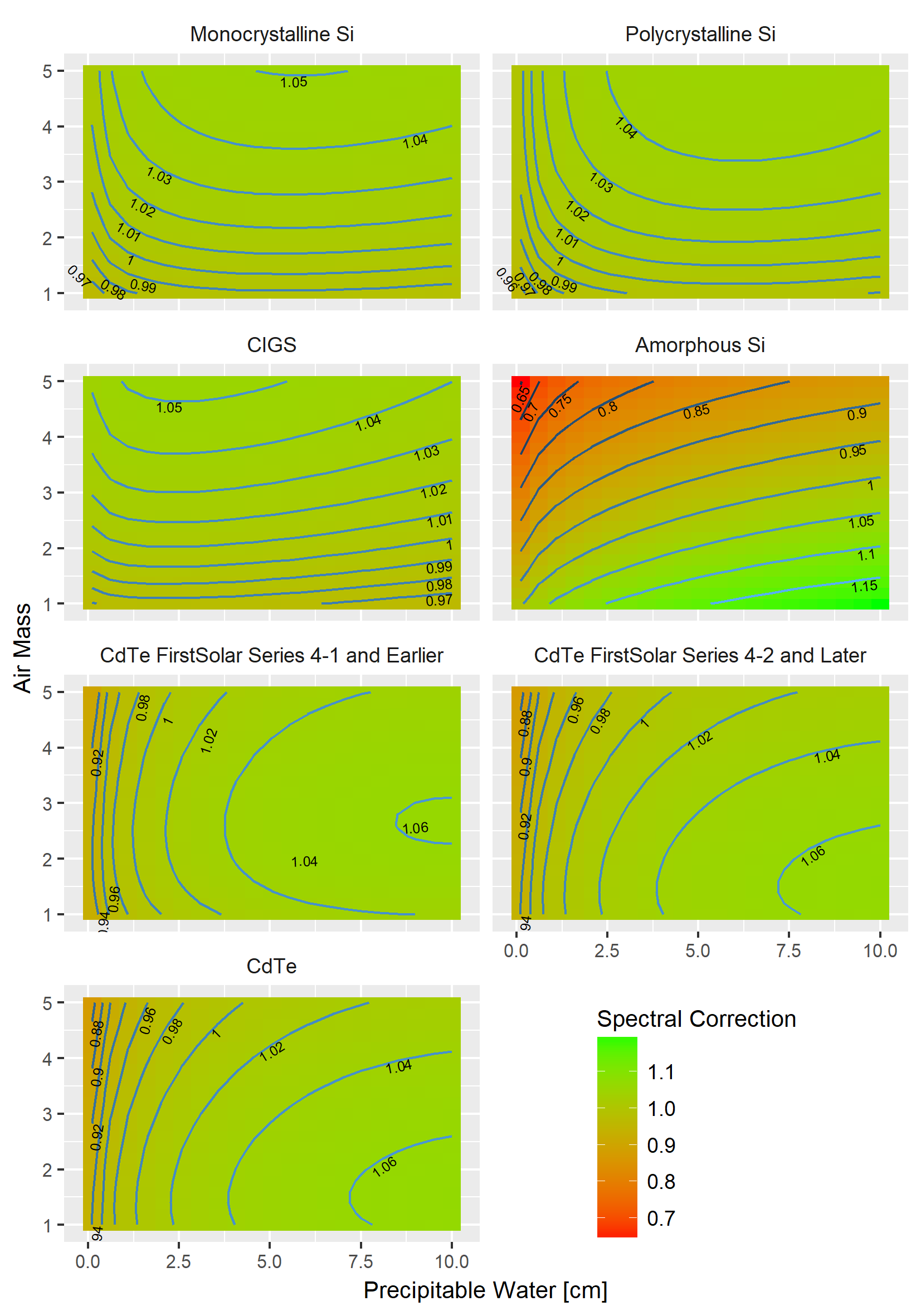FirstSolar Spectral Correction
Spectral correction in PVsyst
In PVsyst, we apply some spectral corrections, differently according to technologies:
- For amorphous modules, PVsyst uses a parametrized correction as function of Kt and Air mass, proposed by the CREST (Univ. of Loughborough).
- For crystalline and CIS, the dependency is extremely weak. It is neglected.
- For CdTe modules, a correction has been proposed by the main manufacturer of this technology.
First Solar spectral correction
PVsyst implements the spectral correction model that was proposed by FirstSolar and published by Lee and Panchulla1.
Please note that this model is not really validated by the scientific community, independently from First Solar. PVsyst doesn't take any responsibility about its results.
This model takes as parameters the air mass and the precipitable water, and computes a correction factor that is multiplied with the effective irradiance, just before calculating the IV-curves and the MPP of a PV module. In case the precipitable water is not available, PVsyst can estimate it from relative humidity, using a model described by Gueymard2.
The FirstSolar model is a non-linear parametrization with six different coefficients. The coefficients are specific for a module type and are derived from Quantum Efficiency curves and the Simple Model of Atmospheric Radiative Transfer for Sunshine (SMARTS). Several sets of coefficients are available in PVsyst, which can be used for different PV module technologies. FirstSolar PV modules have specific coefficient sets that depend on model and series number.
| Coefficient Set | Source |
|---|---|
| Monocrystalline Si | pvlib.atmosphere |
| Polycrystalline Si | pvlib.atmosphere |
| Amorphous Si | pvlib.atmosphere |
| CIGS | pvlib.atmosphere |
| CdTe | pvlib.atmosphere |
| CdTe FirstSolar Series 4-1 and Earlier | First Solar |
| CdTe FirstSolar Series 4-2 and Later | First Solar |
The plots below give an overview of the correction factors for the different set of coefficients for an air mass range from 1 to 5 and a precipitable water range from 0cm to 10 cm.
-
Lee, Mitchell, and Panchula, Alex
Spectral Correction for Photovoltaic Module Performance Based on Air Mass and Precipitable Water.
IEEE Photovoltaic Specialists Conference, Portland, 2016 ↩ -
C. Gueymard
Analysis of monthly average atmospheric precipitable water and turbidity in Canada and Northern United States
Solar Energy 1994, Vol 53Nr.1, pp 57-71 ↩
